donbosco
Inconceivable Member
- Messages
- 3,656
Follow along with the video below to see how to install our site as a web app on your home screen.
Note: This feature may not be available in some browsers.

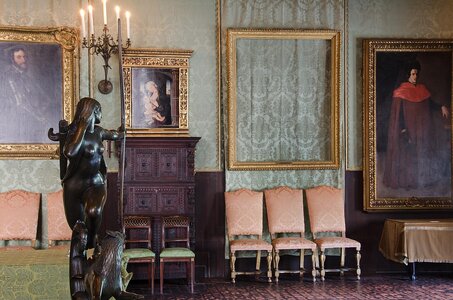
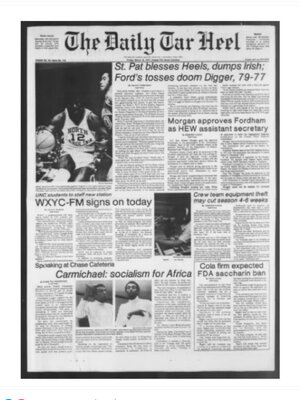
Would you know Chip W? Housemate. Did in 77/78.This one develops slowly but the #OTD comes eventually...
1/: From WXYC to ‘The Pit’ to podiums, stages, and channels, thousands of scholars, activists, artists, and agitators, Chapel Hill has long provided a space where the voices of the Edgy can be heard. I admit that I was not prepared for ‘The Pit’ when I arrived in Chapel Hill in late August, 1976. I had only just returned from a long summer sojourn in England where I had made my first international memories. With the home of cousin Earl Beal (and wife Donna) as my headquarters (RAF Woodbridge - USAF base) I fanned out with trips to London and other stops in East Anglia. I hitch-hiked some, ran in the Queen’s Forest, drank my first legal beer in an Orford Pub, and heard my first Punk Rock.
Hyde Park, with its stump-speakers was a stop but frankly I don’t remember anything particularly outlandish there. Carnaby Street did impress me though for the Mod fashion. I listened to Radio Caroline in the late night and it seemed the world was expanding around me. I took the train, got lost, and thought about never going home.
But excitement over my coming matriculation at Carolina underlay everything that I did that summer. I’d wanted that for quite some time - I can’t really recollect having any other post-Chatham Central High School goal. Dean Smith got me on The Front Porch, UNC-TV and the Legacy of Frank Porter Graham kept me there. Of course in those days my path was set - Major in Political Science and then Law School - that was Deddy’s Dream. Naturally I went OFF Course almost immediately though I hardly even realized it at first.
Chapel Hill in 1976 still bore a sense of Hippiedom but it was also a place in transition. The Vietnam War was over and no draft loomed, and thus death and and killing was just a Big Brother Memory for those of us arriving. Fashion ranged from beards and flannel to platforms and disco miniskirts. Dreadlocks and Mohawks were a bit over the horizon yet. Bongs and Blue Cups were offered up for all in George’s Cheap Joint and He’s Not Here. Phil Ford united us all.
The antics of The Bluegrass Experience graced The Cat’s Cradle on Thursdays while Mayo’s Bacchae was the scene for downtown dance. East Coast Beach records dominated the juke box at Kirkpatrick’s on Rosemary. You could still plunk down coins and hear The Kingston Trio and The Beatles (Helter Skelter was a favorite) in The Shack. Music was a wild bricolage ranging from Grateful Dead, Bob Marley, remnants of album rock, and all the great treasures that Dennis Gavin was introducing us to from the bins of his record shop, The Fair Exchange, just off Franklin on Henderson Street. I even bought a cassette of I.W.W. Songs from Bob Sheldon in Internationalist Books that made me a Utah Phillips fan for life. Dennis and Bob were next door neighbors in those days. Those two small side-by-side shops provided a boy from the outlands very needed instruction and materiel appropriately supplemental to campus offerings.
In keeping with the out-of-classroom learning it was #OTD (March 18) in 1977 that student radio WXYC debuted. So many friends, my wife Leah included, spun tunes over the air and the internet (the station was the First to do that - look it up). The original transmitter was on a South Campus Water Tower - Today the signal emanates from nearby #ChathamCounty ( though not #Deep ).
In those early days, it was ‘The Pit’ where the Great Melding and Smelting took place for me. Preachers and prophets shouted out the error of our ways and protesters and philosophers offered us righteous paths to enlightenment. Or do I have that backwards? It was exactly how it should have, could have, been in that brief post-war, post-Nixon, pre-Reagan, pre-pre-polarized moment.
Looking back those almost four decades it seems like those ‘second-half of the Seventies’ years were a respite, especially since, also looking back, we have been in an ever deepening soul-struggle ever since.

South Campus water tower or that one behind the Newman Foundation off Cameron/Pittsboro?This one develops slowly but the #OTD comes eventually...
1/: From WXYC to ‘The Pit’ to podiums, stages, and channels, thousands of scholars, activists, artists, and agitators, Chapel Hill has long provided a space where the voices of the Edgy can be heard. I admit that I was not prepared for ‘The Pit’ when I arrived in Chapel Hill in late August, 1976. I had only just returned from a long summer sojourn in England where I had made my first international memories. With the home of cousin Earl Beal (and wife Donna) as my headquarters (RAF Woodbridge - USAF base) I fanned out with trips to London and other stops in East Anglia. I hitch-hiked some, ran in the Queen’s Forest, drank my first legal beer in an Orford Pub, and heard my first Punk Rock.
Hyde Park, with its stump-speakers was a stop but frankly I don’t remember anything particularly outlandish there. Carnaby Street did impress me though for the Mod fashion. I listened to Radio Caroline in the late night and it seemed the world was expanding around me. I took the train, got lost, and thought about never going home.
But excitement over my coming matriculation at Carolina underlay everything that I did that summer. I’d wanted that for quite some time - I can’t really recollect having any other post-Chatham Central High School goal. Dean Smith got me on The Front Porch, UNC-TV and the Legacy of Frank Porter Graham kept me there. Of course in those days my path was set - Major in Political Science and then Law School - that was Deddy’s Dream. Naturally I went OFF Course almost immediately though I hardly even realized it at first.
Chapel Hill in 1976 still bore a sense of Hippiedom but it was also a place in transition. The Vietnam War was over and no draft loomed, and thus death and and killing was just a Big Brother Memory for those of us arriving. Fashion ranged from beards and flannel to platforms and disco miniskirts. Dreadlocks and Mohawks were a bit over the horizon yet. Bongs and Blue Cups were offered up for all in George’s Cheap Joint and He’s Not Here. Phil Ford united us all.
The antics of The Bluegrass Experience graced The Cat’s Cradle on Thursdays while Mayo’s Bacchae was the scene for downtown dance. East Coast Beach records dominated the juke box at Kirkpatrick’s on Rosemary. You could still plunk down coins and hear The Kingston Trio and The Beatles (Helter Skelter was a favorite) in The Shack. Music was a wild bricolage ranging from Grateful Dead, Bob Marley, remnants of album rock, and all the great treasures that Dennis Gavin was introducing us to from the bins of his record shop, The Fair Exchange, just off Franklin on Henderson Street. I even bought a cassette of I.W.W. Songs from Bob Sheldon in Internationalist Books that made me a Utah Phillips fan for life. Dennis and Bob were next door neighbors in those days. Those two small side-by-side shops provided a boy from the outlands very needed instruction and materiel appropriately supplemental to campus offerings.
In keeping with the out-of-classroom learning it was #OTD (March 18) in 1977 that student radio WXYC debuted. So many friends, my wife Leah included, spun tunes over the air and the internet (the station was the First to do that - look it up). The original transmitter was on a South Campus Water Tower - Today the signal emanates from nearby #ChathamCounty ( though not #Deep ).
In those early days, it was ‘The Pit’ where the Great Melding and Smelting took place for me. Preachers and prophets shouted out the error of our ways and protesters and philosophers offered us righteous paths to enlightenment. Or do I have that backwards? It was exactly how it should have, could have, been in that brief post-war, post-Nixon, pre-Reagan, pre-pre-polarized moment.
Looking back those almost four decades it seems like those ‘second-half of the Seventies’ years were a respite, especially since, also looking back, we have been in an ever deepening soul-struggle ever since.

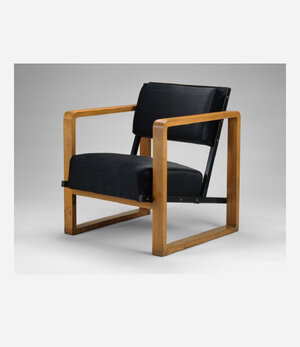
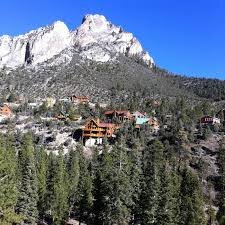
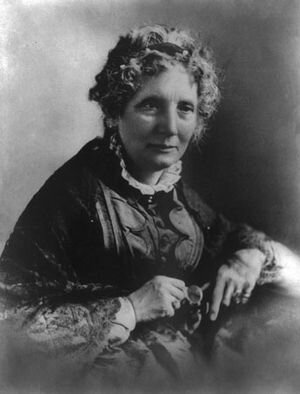
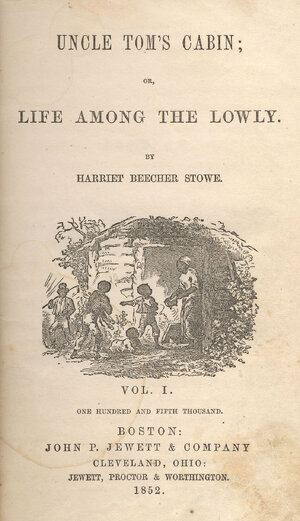
First thought was Reduction In Force. But this may be a better definition.R.I.F.
Coincidence? I think not. My sister got on a plane to Vegas this morning. Meeting a cousin who happens to be a SDSU grad. Gloating shall occur.
1931 Nevada legalized gambling, which paved the way for casinos in the state, most notably in Las Vegas.
As an old school guy who enjoyed learning about real mobsters I always stayed at the Tropicana or Flamingo.
One time after a 10 day Canyon trip I arrived at a Forest Seviice campground on Mt. Charleston just west of Vegas. (Poor guy tgen. No afford hotel) and set up camp. One Wimnebago there. Great. Back to Vegas and walking aliong the strip,was just too much - people noise, lights. Turned around and back o the mountains, built a fire and looked down at the lights of Vegas. Impressive.

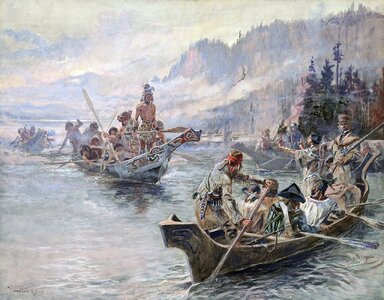
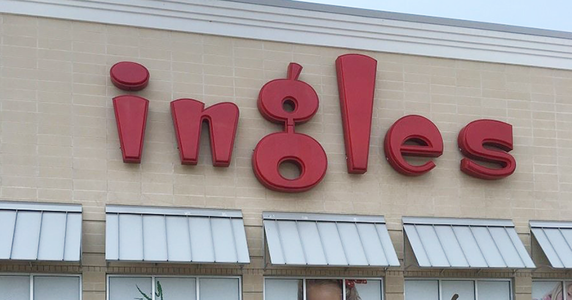
Everything you need to know about what kind of person Clark was, is contained in the link posted below. Usually, I am overly cautious about holding people from the past to current ethical standards. But some behavior simply transcends any notions of time and place.Some hard core adventurers thos guys were.
1806 Lewis and Clark begin their trip home after an 8,000 mile trek of the Mississippi basin and the Pacific Coast.
The Lewis and Clark Expedition, also known as the Corps of Discovery Expedition, was the United States expedition to cross the newly acquired western portion of the country after the Louisiana Purchase. The Corps of Discovery was a select group of U.S. Army and civilian volunteers under the command of Captain Meriwether Lewis and his close friend Second Lieutenant William Clark. Clark, along with 30 others, set out from Camp Dubois (Camp Wood), Illinois, on May 14, 1804, met Lewis and ten other members of the group in St. Charles, Missouri, then went up the Missouri River. The expedition crossed the Continental Divide of the Americas near the Lemhi Pass, eventually coming to the Columbia River, and the Pacific Ocean in 1805. The return voyage began on March 23, 1806, at Fort Clatsop, Oregon, ending six months later on September 23 of that year.
President Thomas Jefferson commissioned the expedition, shortly after the Louisiana Purchase of 1803, to explore and detail as much of the new territory as possible. Furthermore, he wished to find a practical travel route across the western half of the continent—directly avoiding the hot and desolate desert southwest—and to establish an American presence in the new lands before European powers attempted to establish claims of their own. The campaign's secondary objectives were scientific, economical and humanitarian, i.e., to document the West's biodiversity, topography and geography and to establish positive trade relations with (potentially unknown) Native American tribes. The expedition returned to St. Louis to report their findings to President Jefferson via maps, sketches, and various journals.[1][2]
Corps of Discovery meet Chinooks on the Lower Columbia, October 1805 (Lewis and Clark on the Lower Columbia painted by Charles Marion Russel, c. 1905)
